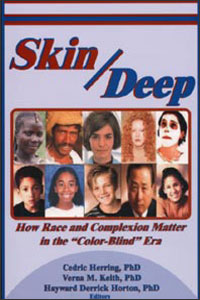Reconstructing Hybridity: Post-Colonial Studies in TransitionPosted in Anthologies, Books, History, Identity Development/Psychology, Media Archive, Social Science on 2010-02-07 01:14Z by Steven |
Reconstructing Hybridity: Post-Colonial Studies in Transition
Rodopi
2007
330 pages
Hardback: 978-90-420-2141-9 / 90-420-2141-1
Edited by:
Joel Kuortti, Adjunct Professor of Contemporary Culture
University of Jyväskylä, Finland
Jopi Nyman, Acting Professor of English
University of Joensuu, Finland
This interdisciplinary collection of critical articles seeks to reassess the concept of hybridity and its relevance to post-colonial theory and literature. The challenging articles written by internationally acclaimed scholars discuss the usefulness of the term in relation to such questions as citizenship, whiteness studies and transnational identity politics. In addition to developing theories of hybridity, the articles in this volume deal with the role of hybridity in a variety of literary and cultural phenomena in geographical settings ranging from the Pacific to native North America. The collection pays particular attention to questions of hybridity, migrancy and diaspora.
Table of Contents
- Contributors
- Joel KUORTTI and Jopi NYMAN: Introduction: Hybridity Today
- Part One: Reconstructing Theories of Hybridity
-
- David HUDDART: Hybridity and Cultural Rights: Inventing Global Citizenship
- Sabine BROECK: White Fatigue, or, Supplementary Notes on Hybridity
- Dimple GODIWALA: Postcolonial Desire: Mimicry, Hegemony, Hybridity
- Jeroen DEWULF: As a Tupi-Indian, Playing the Lute: Hybridity as Anthropophagy
- Paul SHARRAD: Strategic Hybridity: Some Pacific Takes on Postcolonial Theory
- Andrew BLAKE: From Nostalgia to Postalgia: Hybridity and Its Discontents in the Work of Paul Gilroy and the Wachowski Brothers
- Part Two: Reading Hybridity
- Zoe TRODD: Hybrid Constructions: Native Autobiography and the Open Curves of Cultural Hybridity
- Sheng-Mei MA : The Necessity and Impossibility of Being Mixed-Race in Asian American Literature
- Jopi NYMAN: The Hybridity of the Asian American Subject in Cynthia Kadohata’s The Floating World
- Joel KUORTTI: Problematic Hybrid Identity in the Diasporic Writings of Jhumpa Lahiri
- Andrew HAMMOND: The Hybrid State: Hanif Kureishi and Thatcher’s Britain
- Valerie KANEKO LUCAS: Performing British Identity: Fix Up and Fragile Land
- Samir DAYAL: Subaltern Envy? Salman Rushdie’s Moor’s Last Sigh
- Mita BANERJEE: Postethnicity and Postcommunism in Hanif Kureishi’s Gabriel’s Gift and Salman Rushdie’s Fury
- Index


